This email is probably too long to read directly from your inbox. If you click on "View entire message" or “Read in App”, you'll be able to view the entire post in your email app.
There are many ways of travelling for me. Most of the time, I travel for volunteering, others for doing a training, and sometimes just for the sake of travelling. This time, I’m going to write about a work trip I took in April 2019, because when you attend a conference, you can also have time to explore a city.
During my PhD, I had the opportunity to attend a conference in Athens, where I delivered a lecture about my research. It was great for networking and discovering other outstanding research. I also took advantage of this opportunity to run a half marathon the day before the conference started and visit one of the most fascinating cities in the world.
Athens is a city where time folds over itself. Walk its streets, and you’ll see ancient ruins framed by graffiti-covered walls, timeworn columns rising behind apartment blocks, and the Acropolis perched above it all, silent, powerful, eternal.
Often described as the cradle of Western civilisation, Athens is far more than a museum city. It's alive, chaotic, and full of creativity. Locals debate politics with passion, music spills into alleyways, and even stray cats seem to carry the weight of history in their eyes.
The real magic of Athens lies in its contrasts. One moment you're standing among 2,500-year-old marble at the Parthenon; the next, you're in a trendy Psiri bar sipping raki and listening to live rembetiko. It's ancient and modern, sacred and profane, elegant and gritty, often in the same breath.
The conference lasted for three days. On the second day, I had my lecture in the morning, and I was the chairman in the afternoon. I used the other days to visit the city, as I was only attending the lectures that interested me.
On the first day, I started from Syntagma Square, the heart of modern Athens, a lively, symbolic space where history and daily life converge. Located in front of the Hellenic Parliament, and surrounded by neoclassical buildings, luxury hotels, and buzzing cafés, the square is both a political centre and a popular gathering place for locals and tourists alike.
From the square, I walked to the National Garden, a peaceful green oasis in central Athens, which surrounds the elegant Zappeion Hall, a neoclassical landmark used for exhibitions and public events.
From there, I went to the Temple of Olympian Zeus, also known as the Olympieion, one of the largest ancient temples ever built in Greece. Dedicated to Zeus, king of the Olympian gods, its construction began in the 6th century BCE but wasn’t completed until the Roman Emperor Hadrian finished it over 600 years later, in 131 CE. Originally featuring 104 colossal Corinthian columns, only 15 remain standing today, plus one that lies dramatically toppled. Despite its ruined state, the temple still impresses with its sheer scale and the sense of grandeur it evokes, especially with the Acropolis visible in the background.
Very close to this temple stands the most iconic landmark in Greece and a symbol of Western civilisation, the Acropolis. Rising above the city on a rocky hill, it has stood for over 2,500 years as a testament to ancient Greek art, philosophy, and democracy. At its heart is the Parthenon, a majestic temple dedicated to Athena, the city’s patron goddess. The Acropolis also includes the Erechtheion, known for its elegant Caryatids, the Temple of Athena Nike, and the grand Propylaea gateway.
More than just ruins, the Acropolis is a place where marble meets myth, where every column and stone whispers the legacy of classical Athens.
The route up to the Acropolis is a scenic and historic walk that winds gently uphill through ancient stones, shaded paths, and centuries of civilisation. Starting near the Dionysiou Areopagitou pedestrian street, you'll pass landmarks like the Theatre of Dionysus and the Odeon of Herodes Atticus, with the Acropolis gradually revealing itself above.
The climb is not steep but offers frequent places to pause, beside old ruins, or at viewpoints overlooking Athens. As you ascend through the monumental Propylaea gate, the marble glows in the sunlight, and you step into the sacred heart of ancient Greece.
From up there, I saw a hill where people were gathering, and I decided to reach it because I thought it could be a nice place to enjoy the sunset.
Areopagus Hill, also known as the Hill of Ares, is a rocky outcrop located just northwest of the Acropolis. In ancient times, it served as the site of Athens' high court, especially for cases involving homicide.
Climbing the hill is easy and rewarding; its summit offers breathtaking panoramic views of the Acropolis, Ancient Agora, and the cityscape of Athens. As the sunset was approaching, more people were coming, bringing some drinks. It was a good idea because the view of the Acropolis from there was amazing, and the atmosphere with all the people was very chill.
My first day in Athens was great; exploring the ruins was a unique experience. Seeing these historic sites up close gave me a real sense of the city’s past and made the start of my trip feel truly special.
The route of the half-marathon that I ran was in the harbour area in the Palaio Faliro part of the city. During the race, I found that area interesting, so during the lunch break of the second day, I went to visit it.
The Flisvos Waterfront is a charming seaside promenade, a perfect escape from the city’s hustle without ever leaving town. Lined with palm trees, cafes, and playgrounds, it offers stunning views of the Saronic Gulf.
I strolled along the marina, rechecking the route I ran a few days before, and I took some pictures of the sea and the few people I found there. I’m sure there are more beautiful places on the seaside near Athens, but I enjoyed these few hours discovering this area.
You are probably wondering what happened on the third day; that is a story for the next blog.
See you soon
Flavio




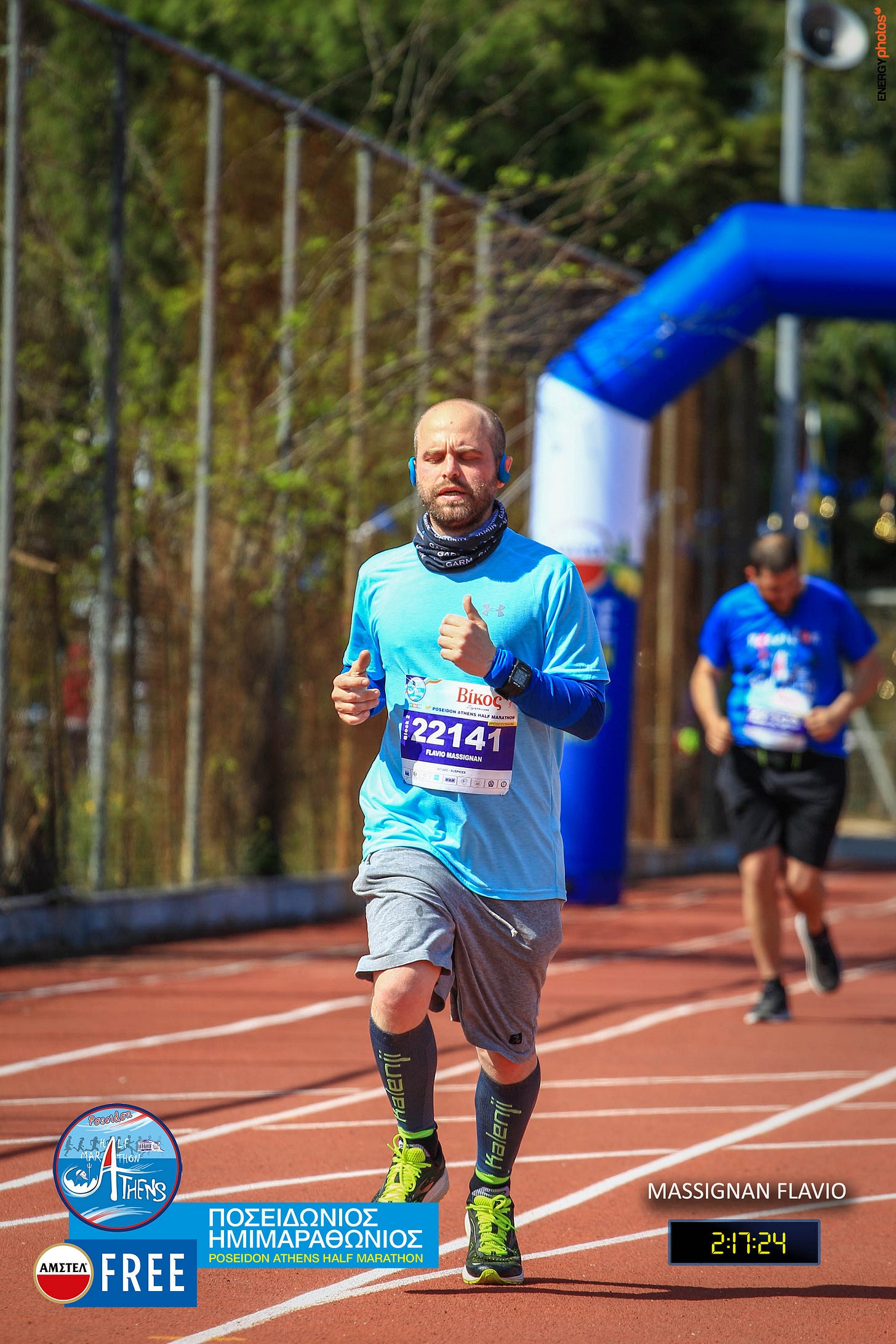
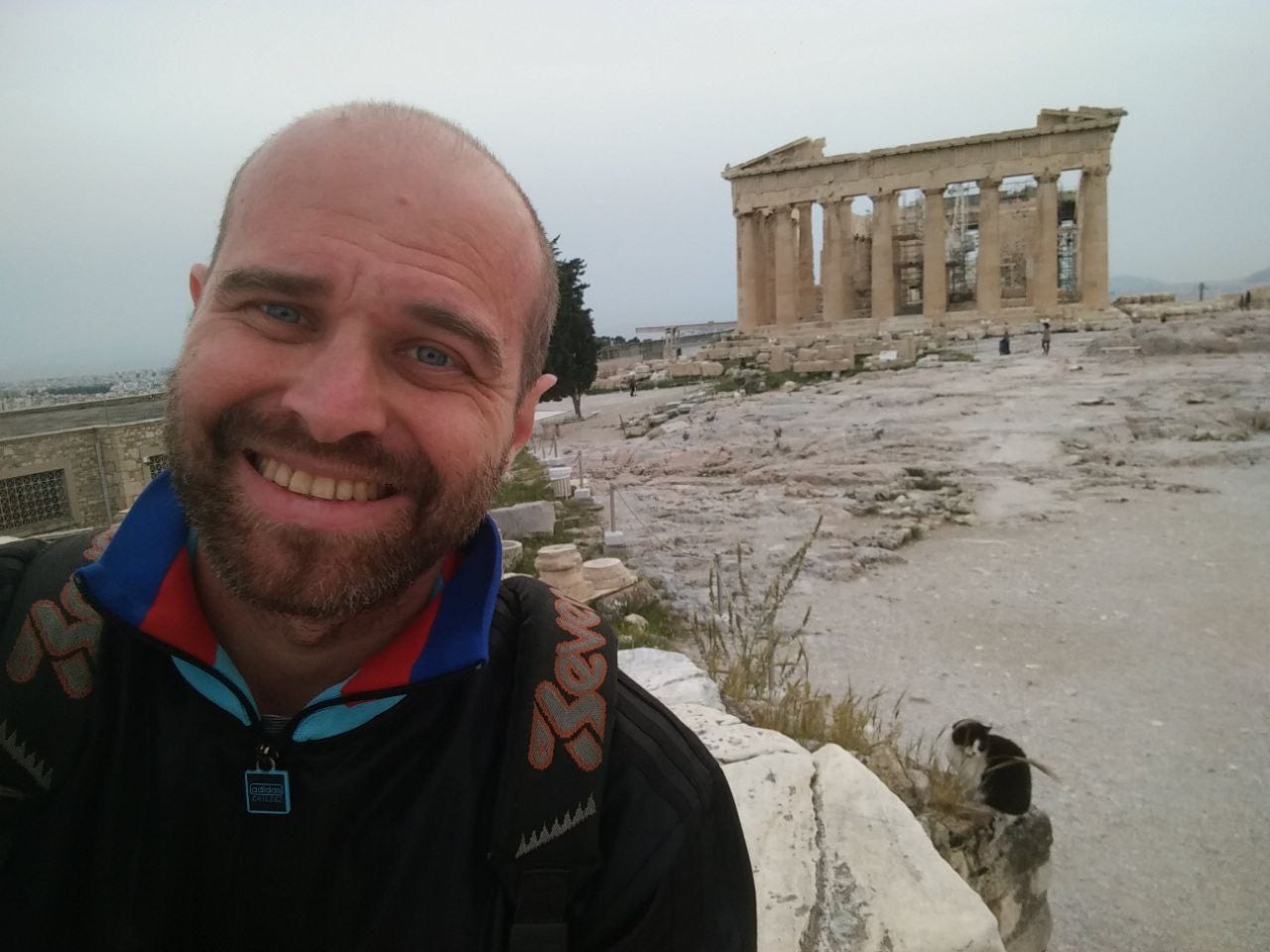
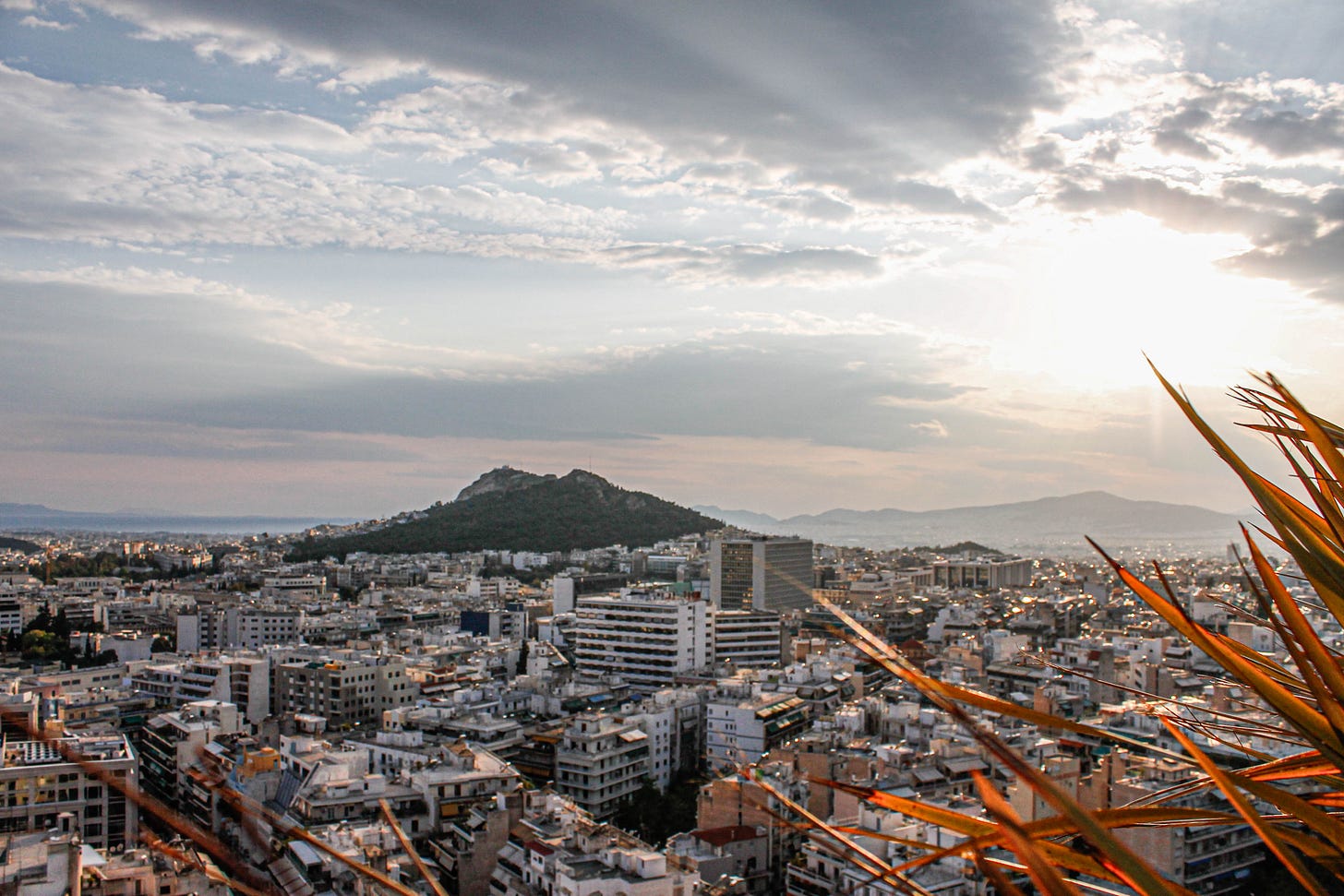

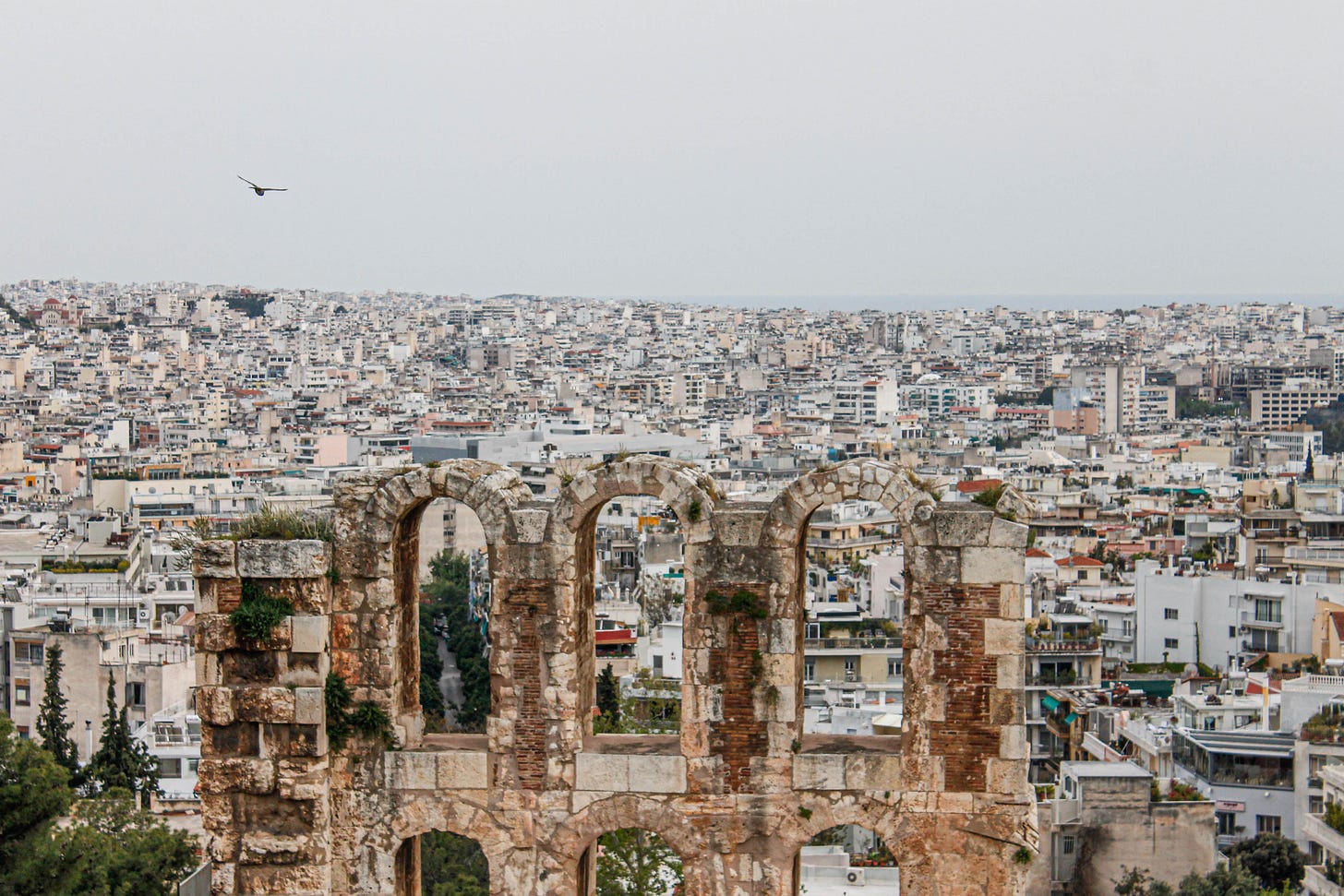

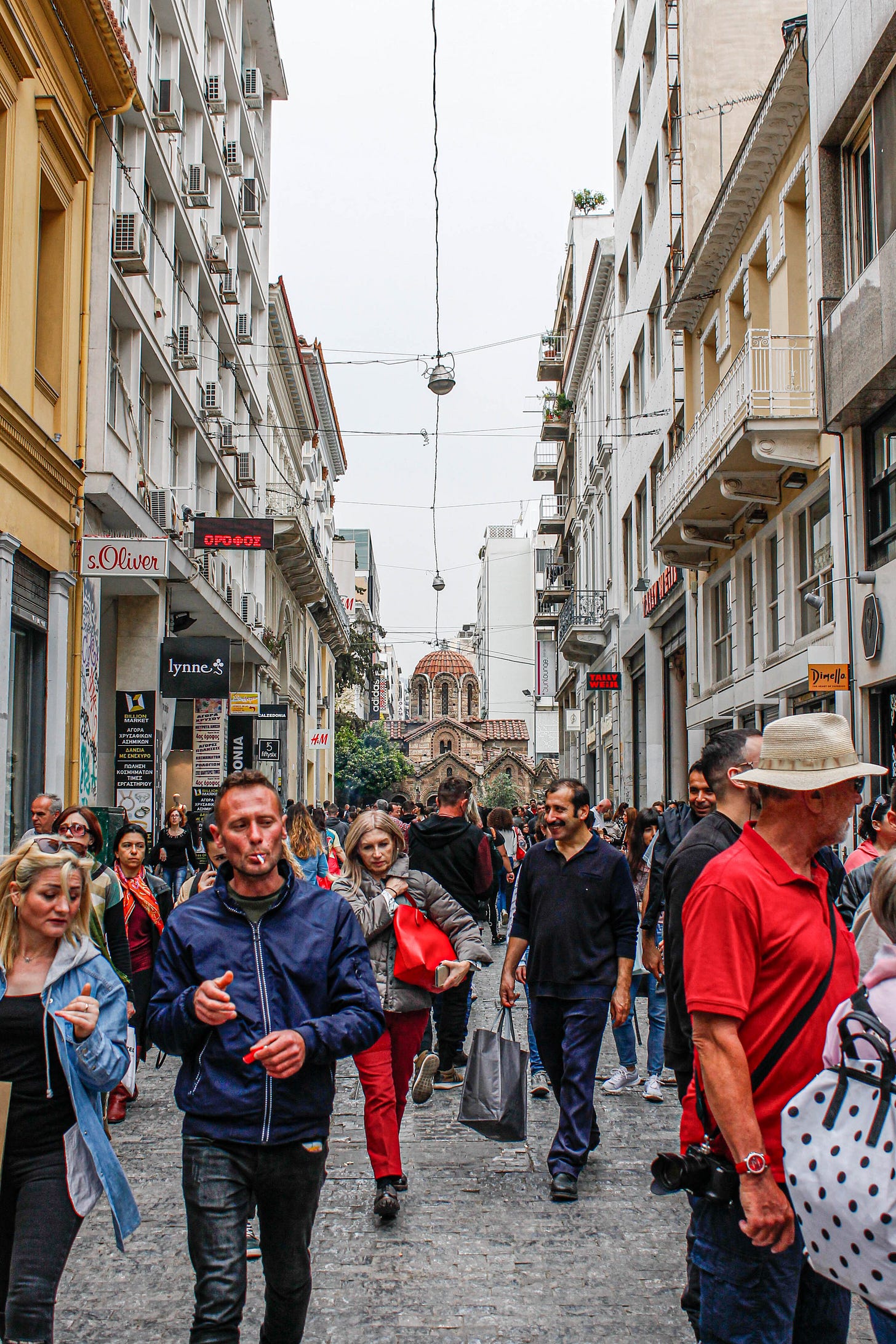
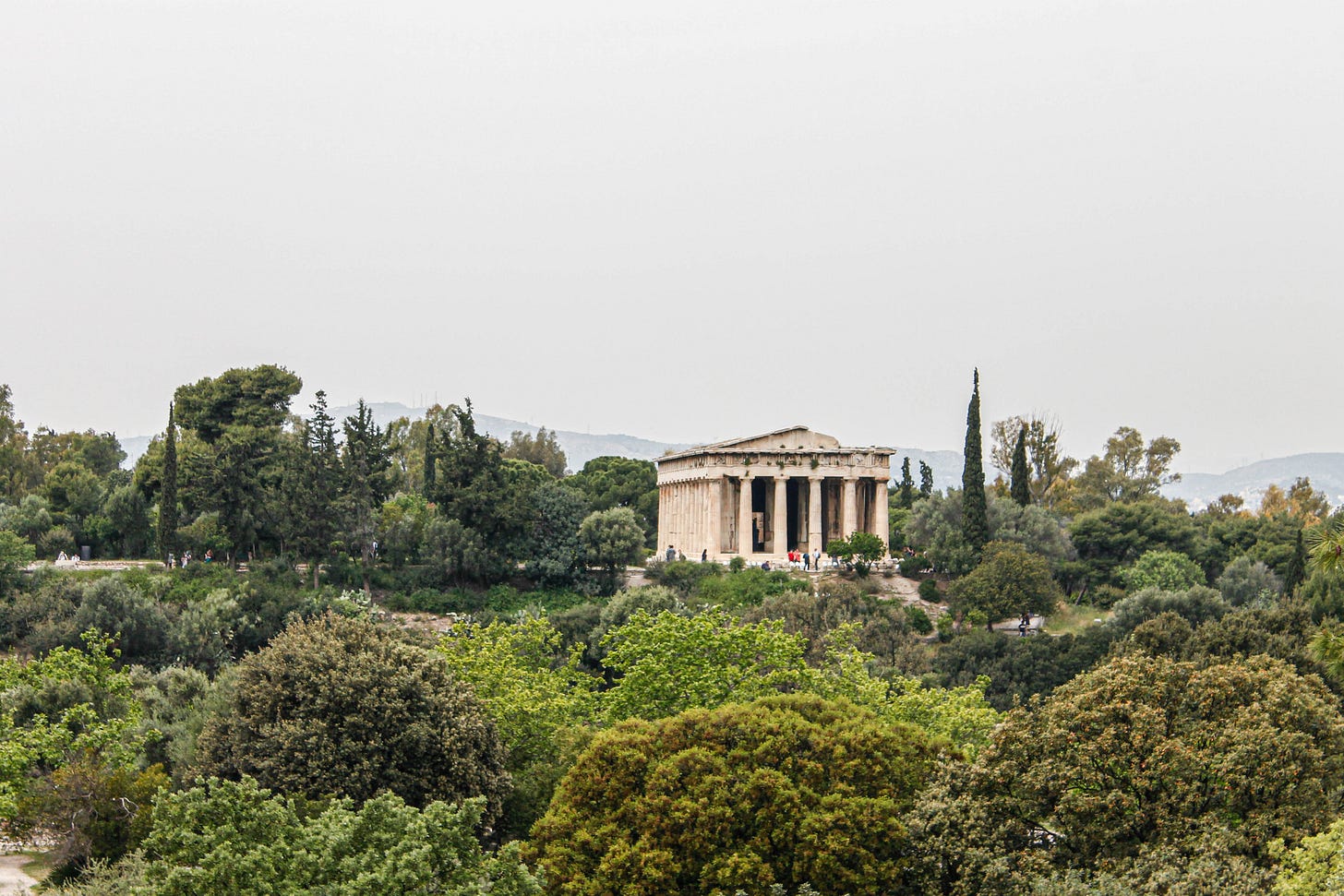

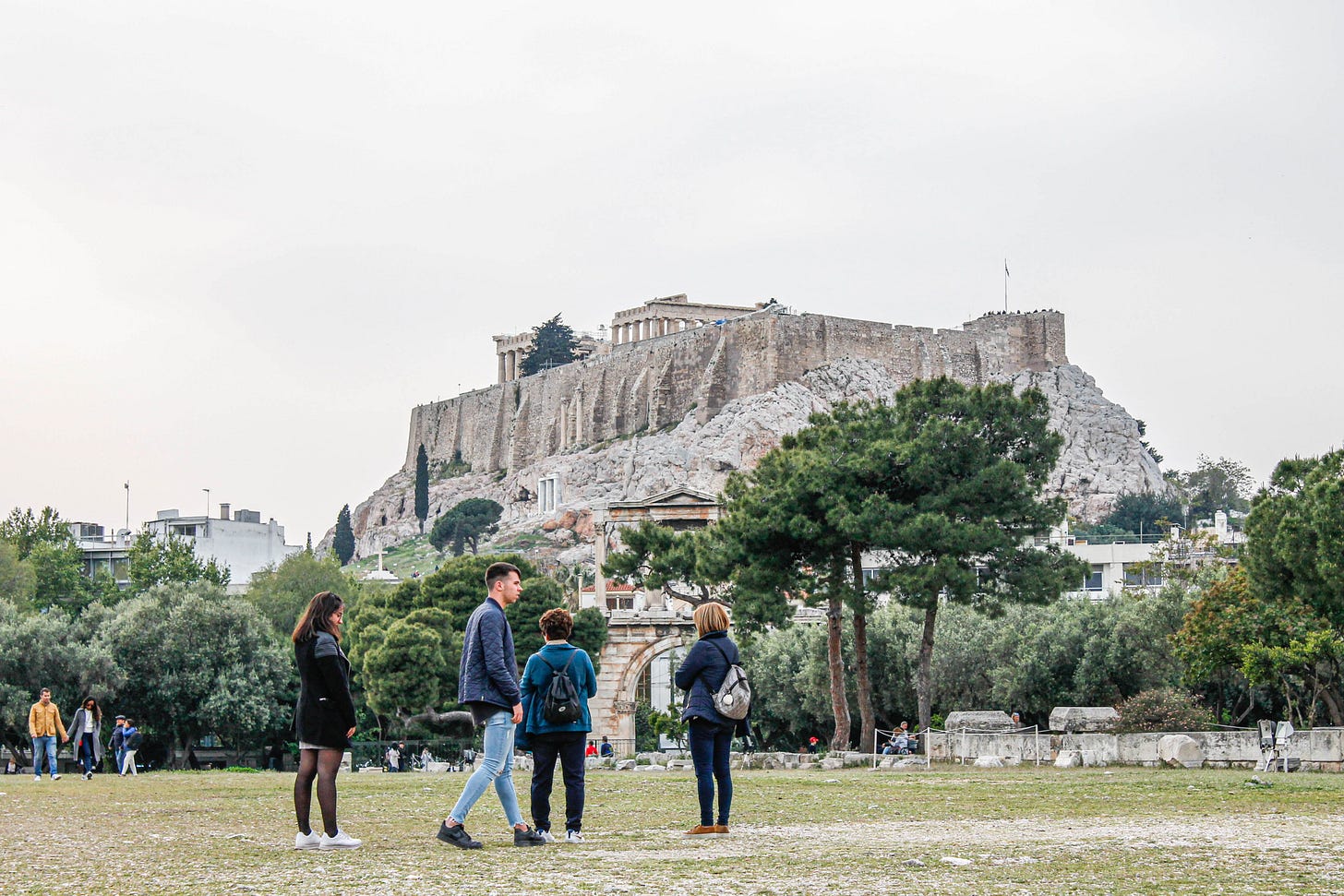
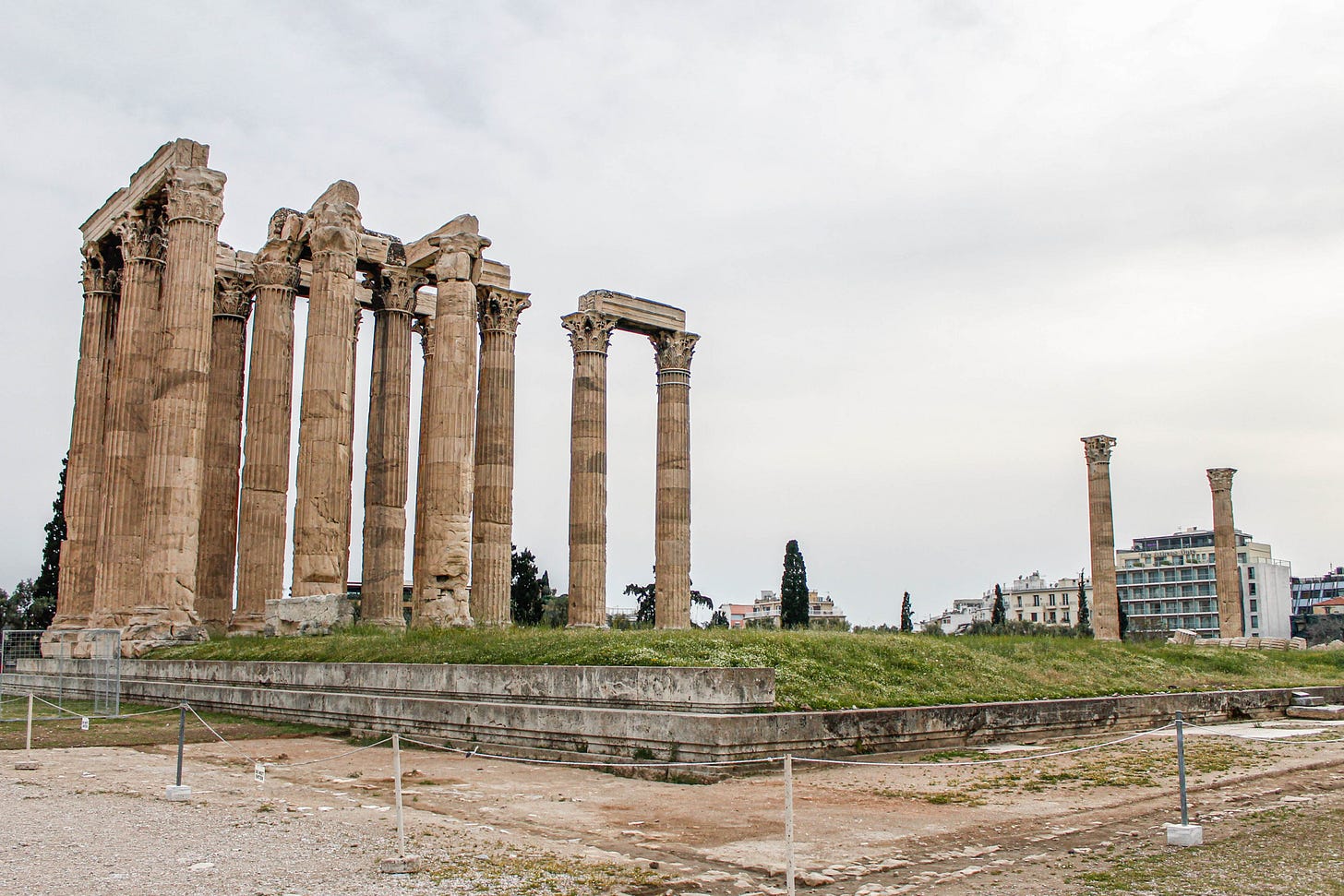

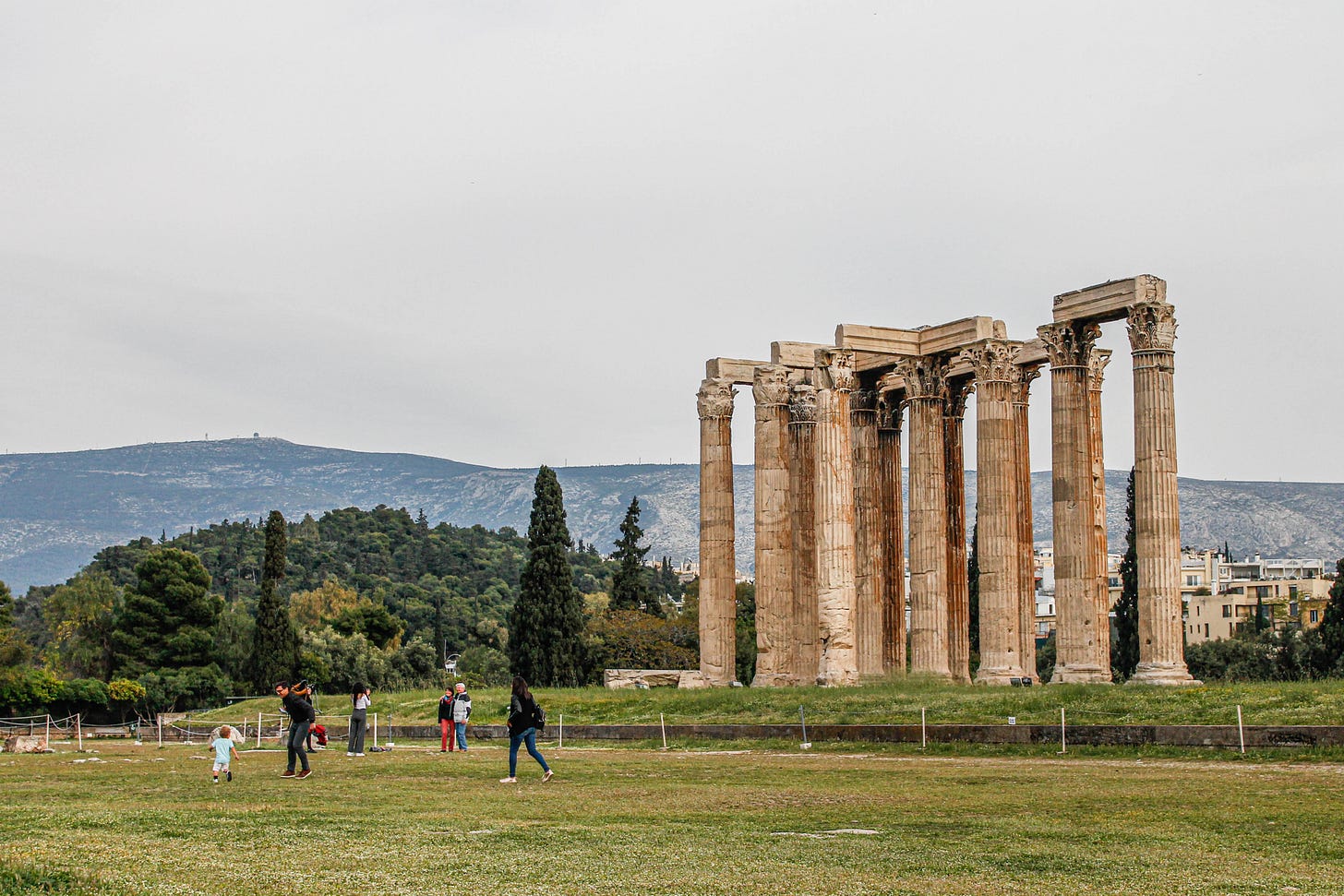

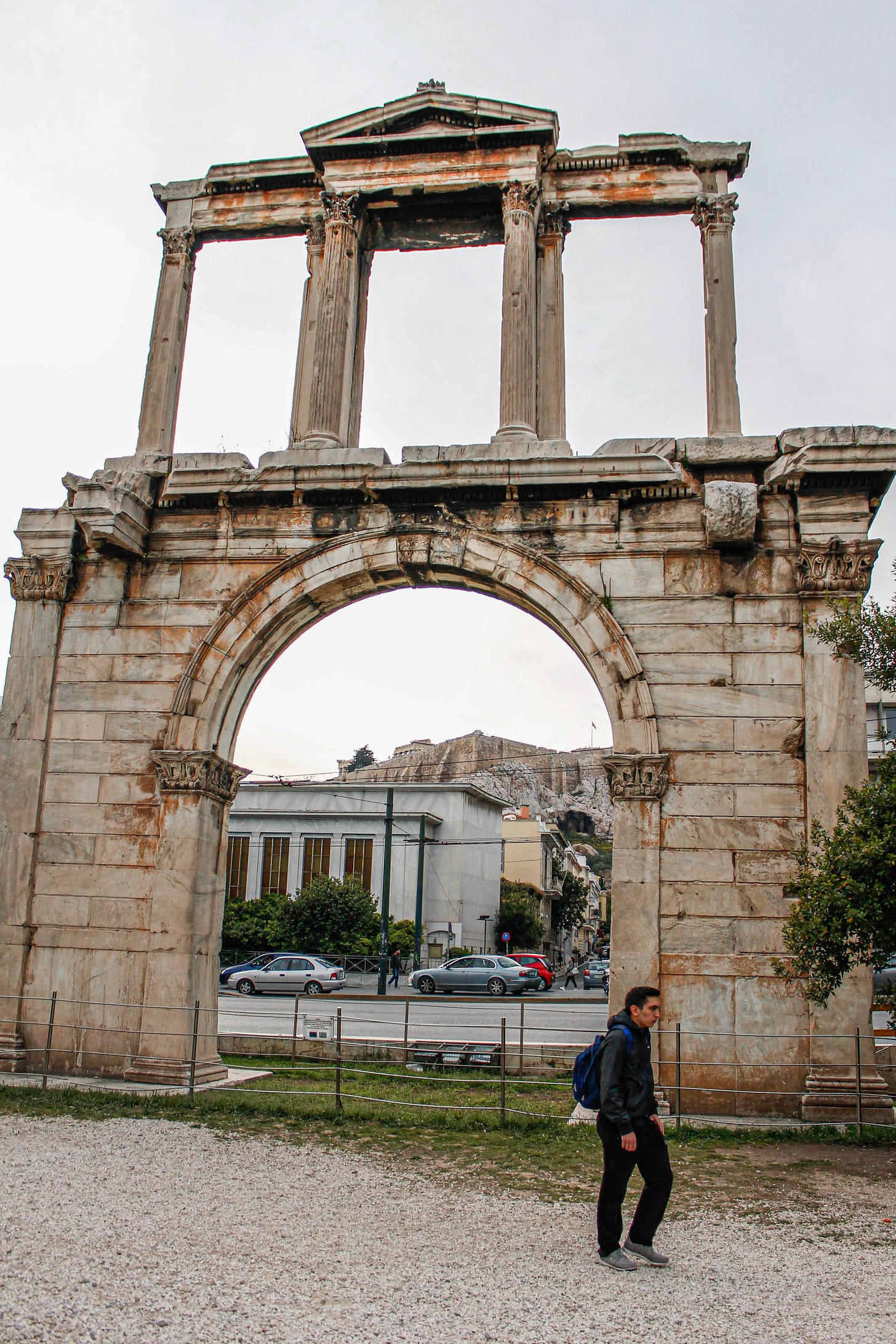



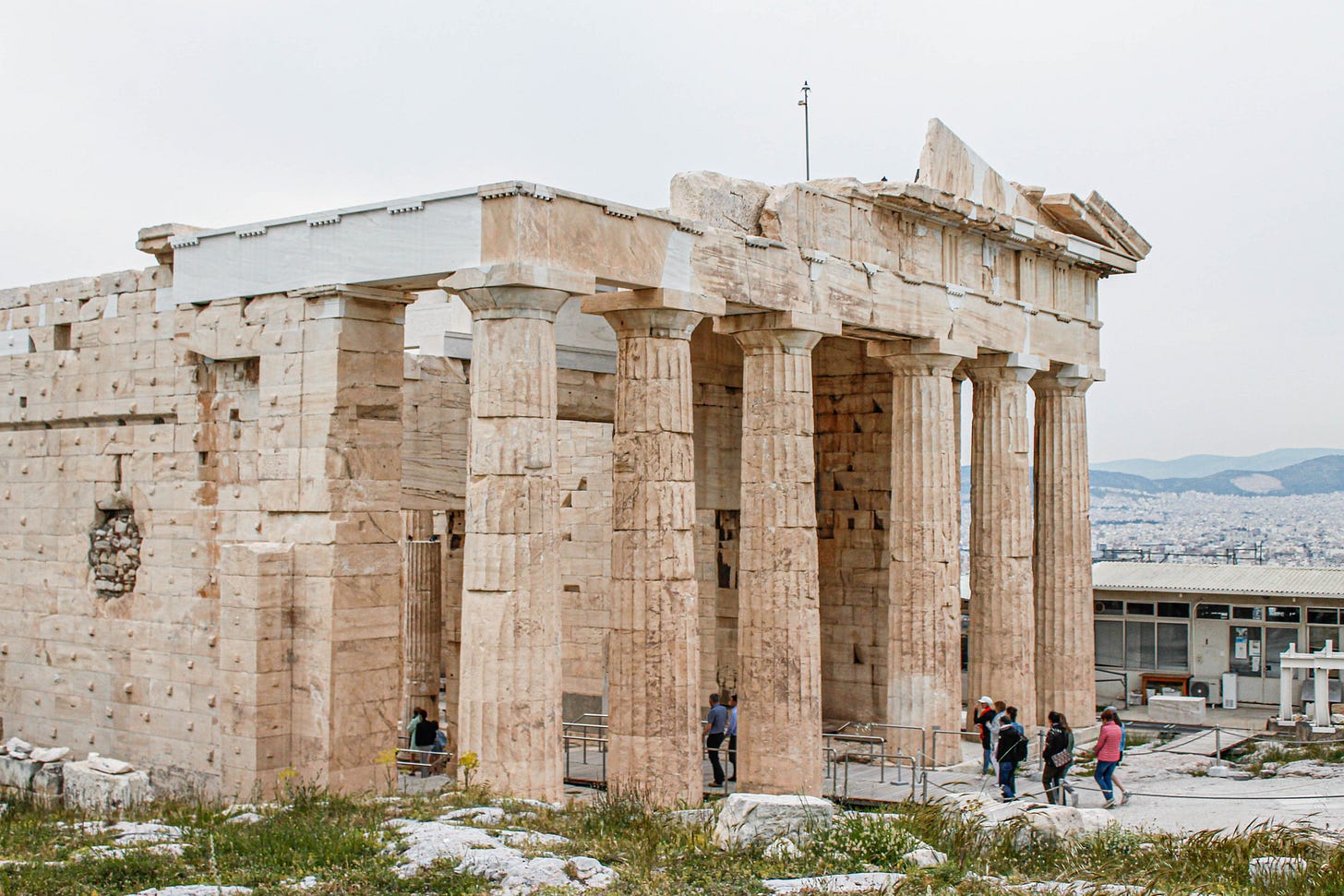
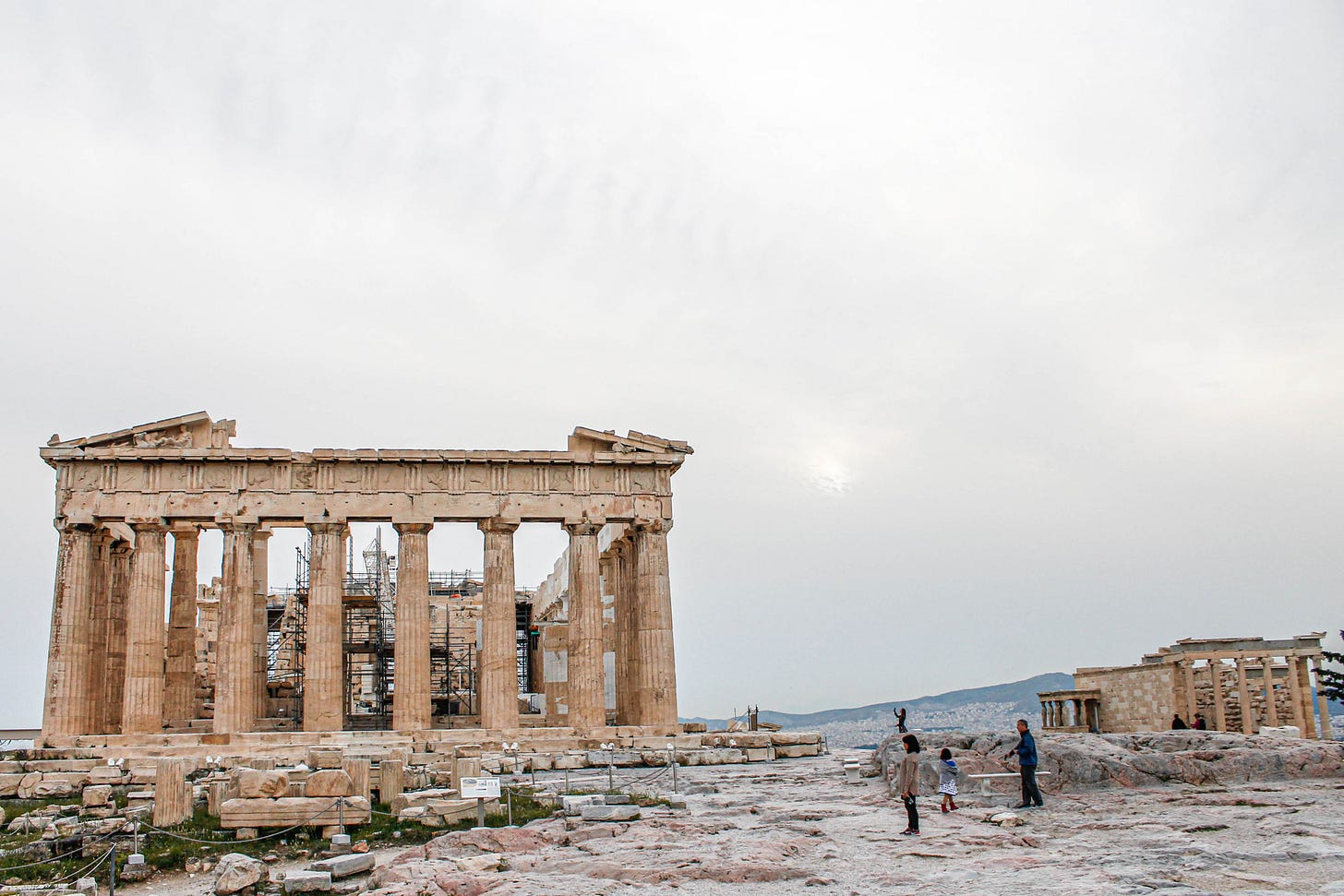
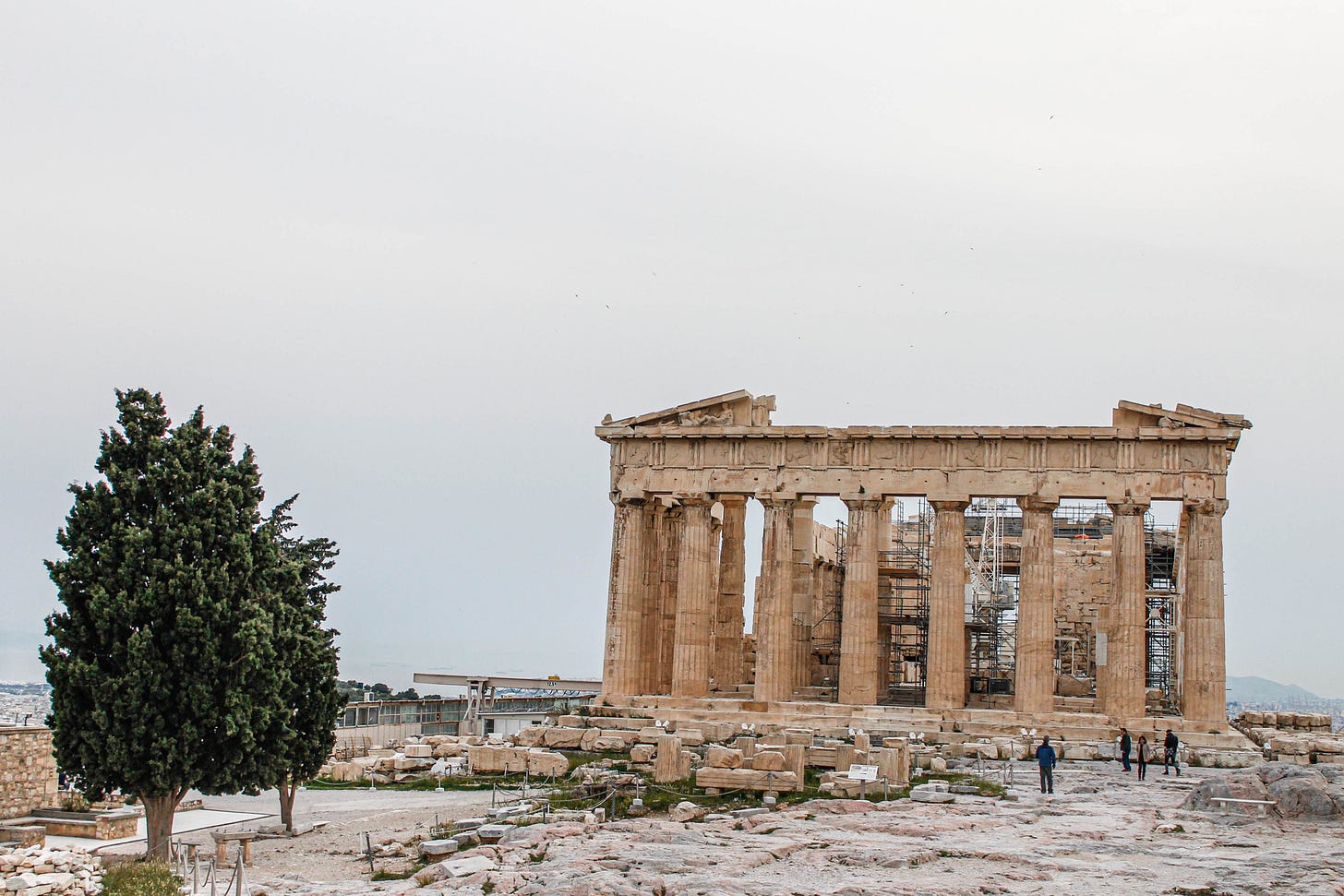
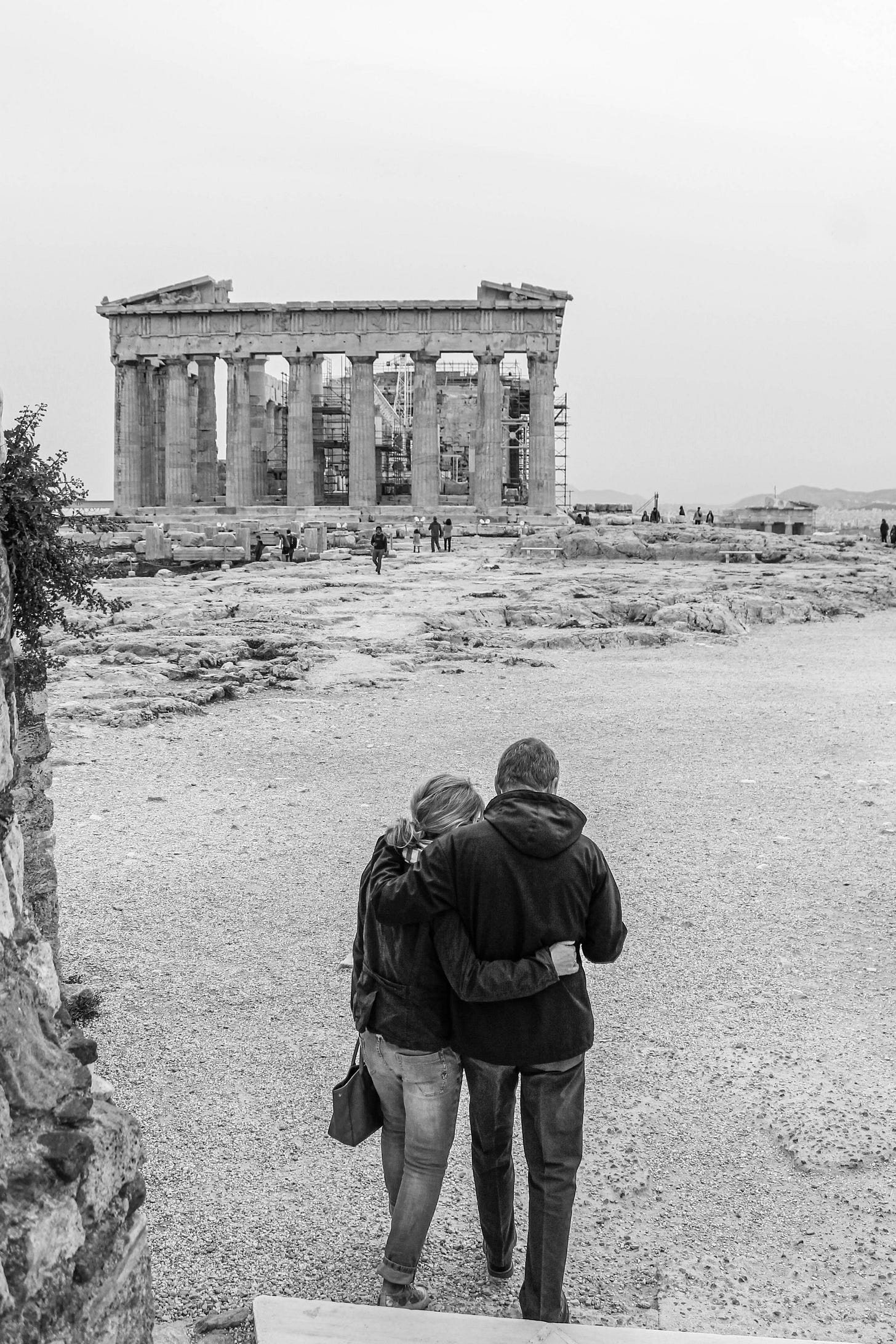

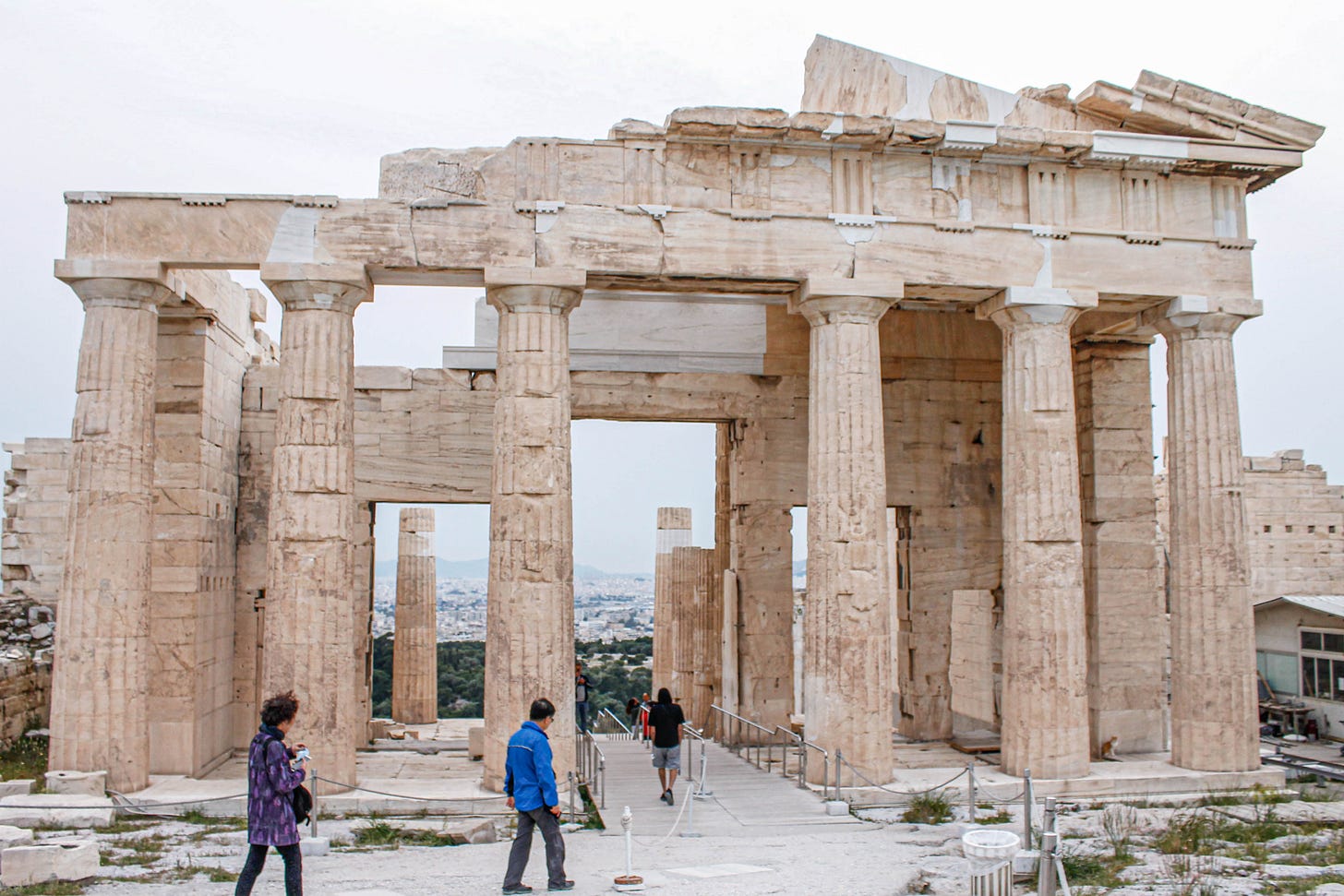

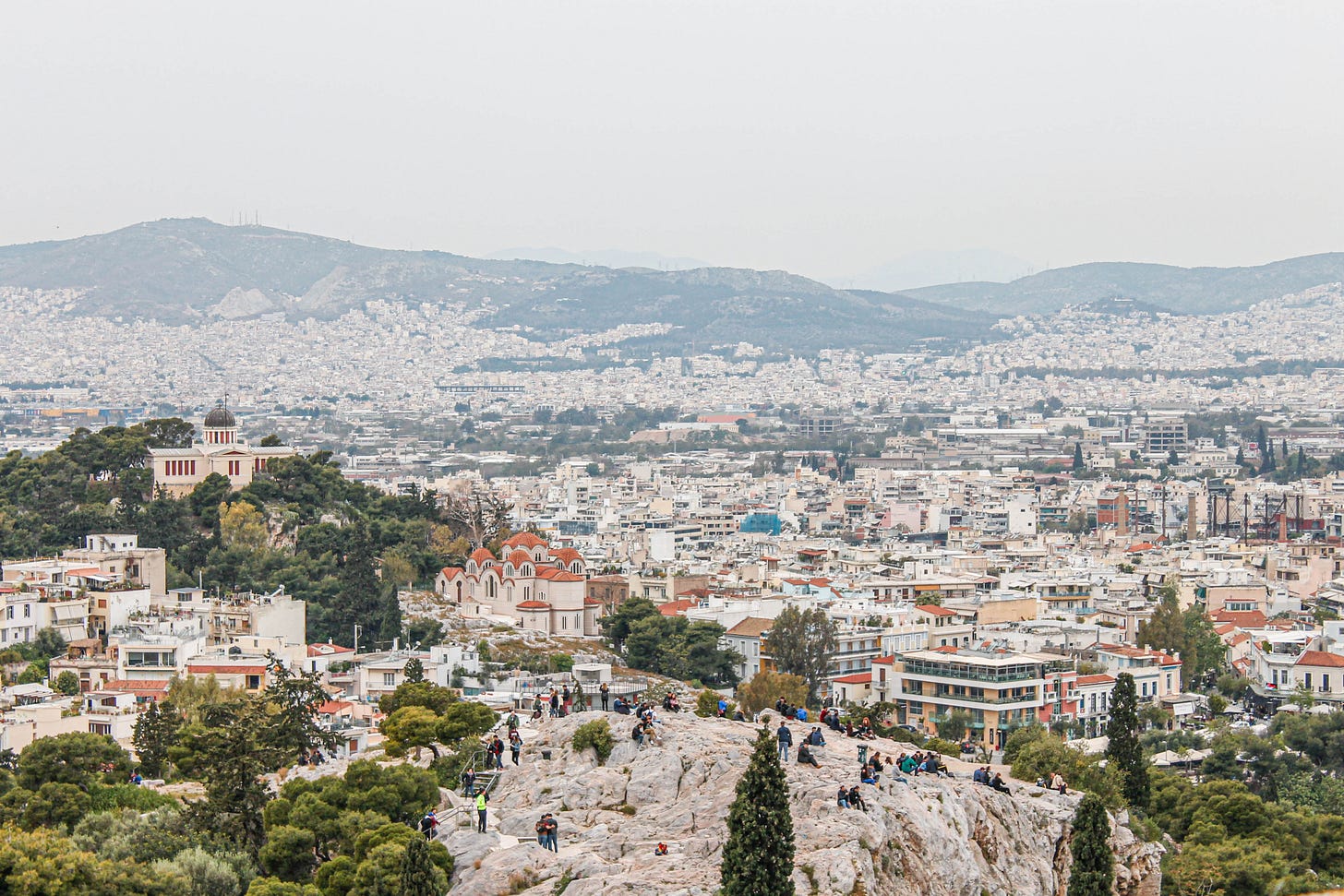
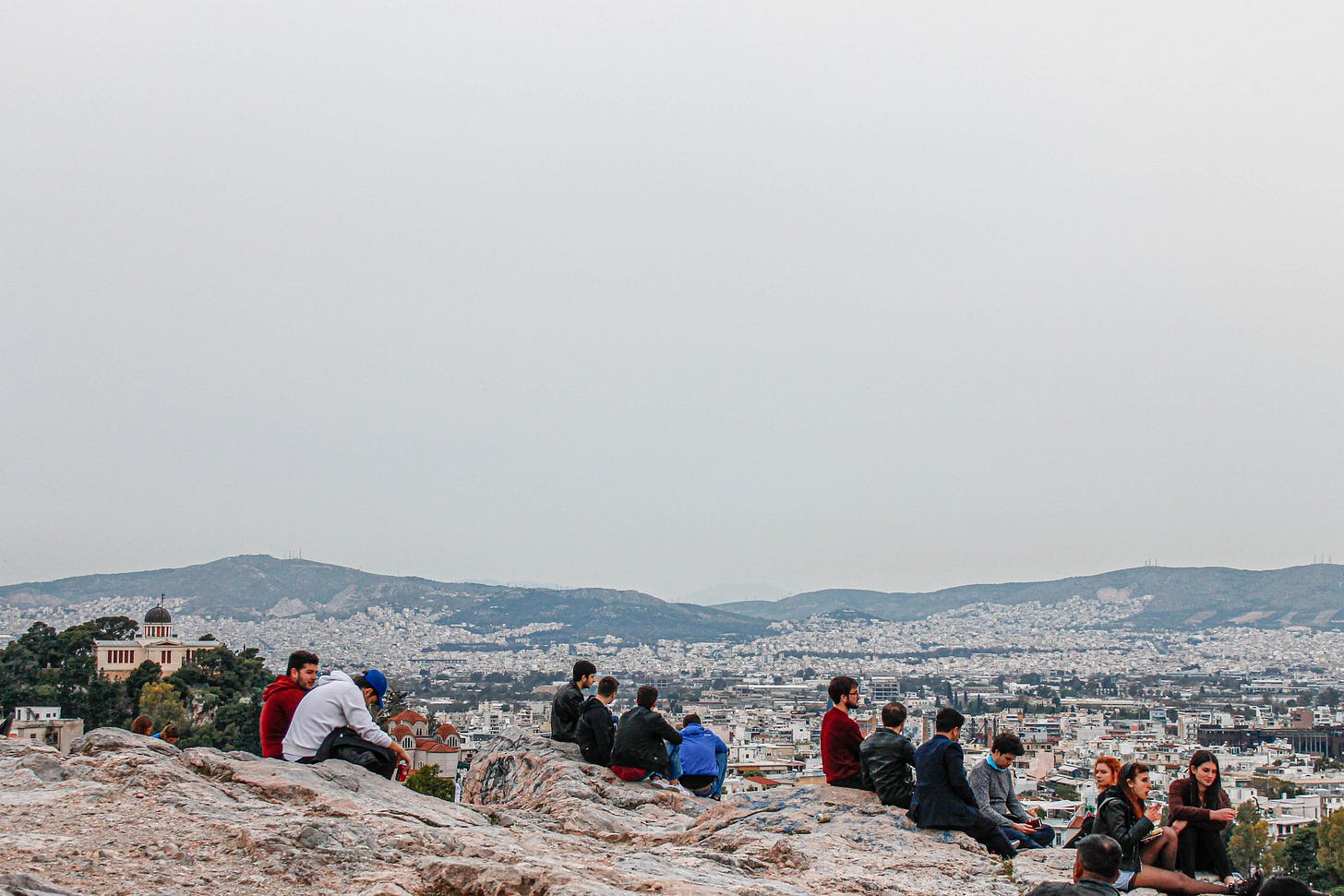
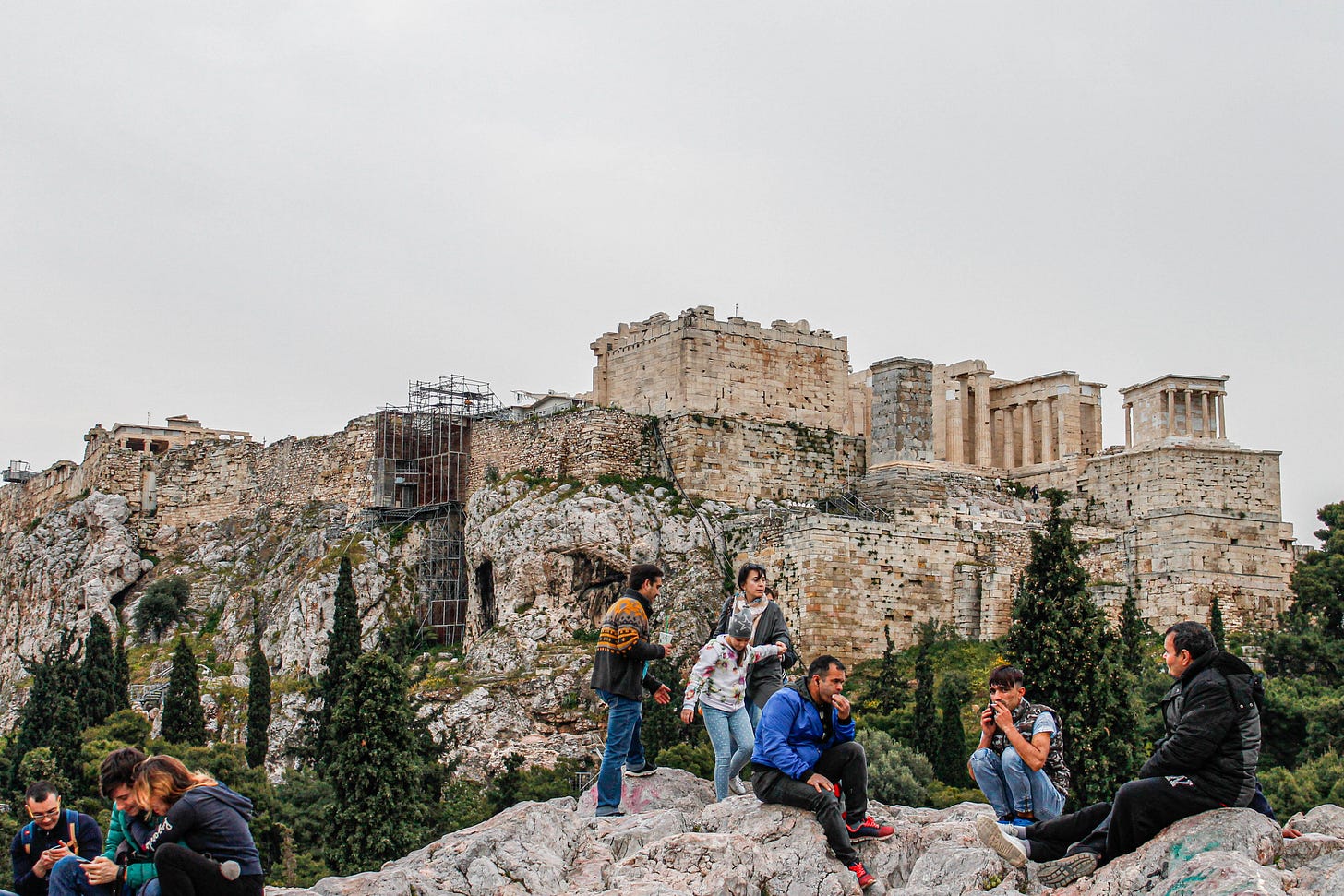

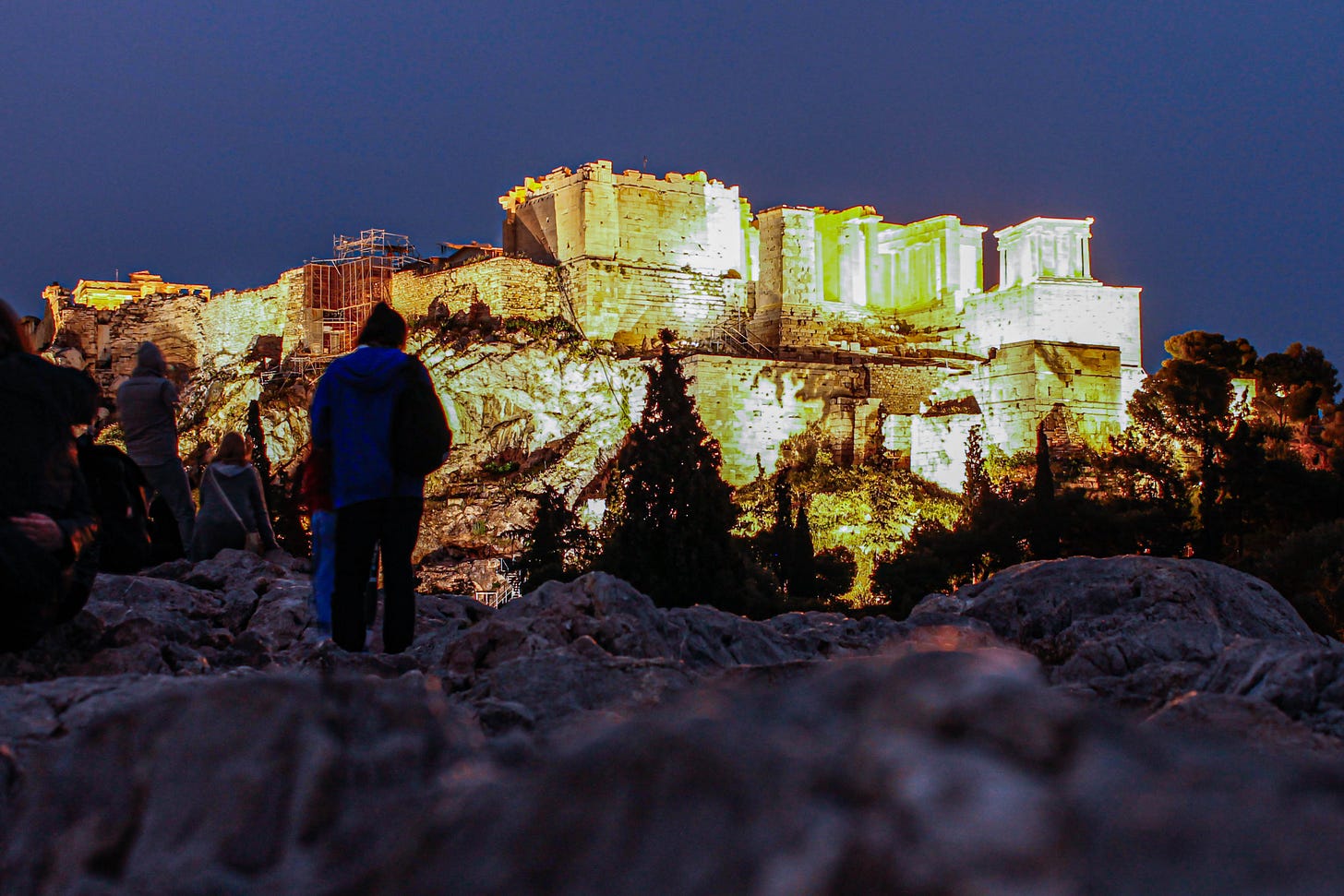


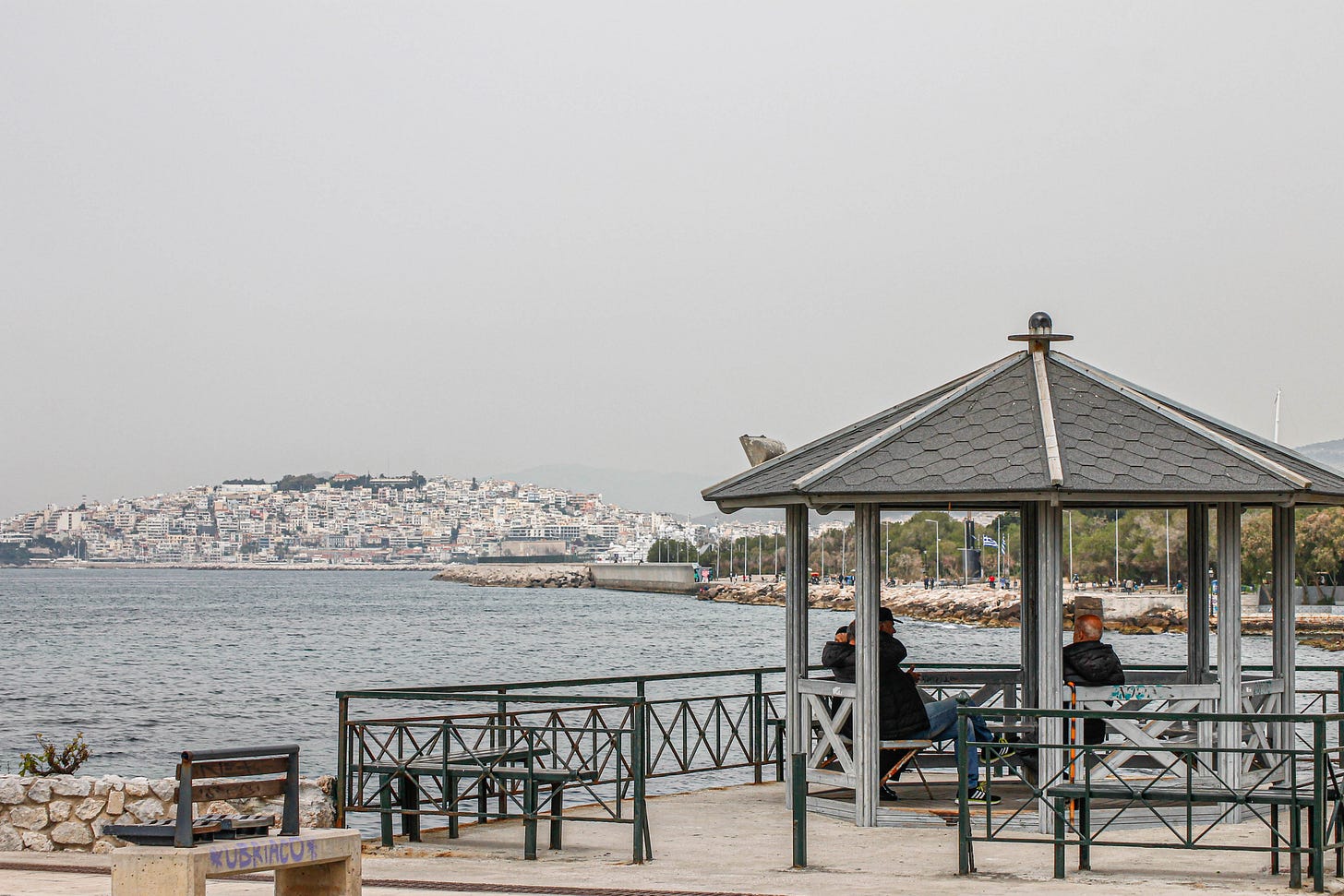
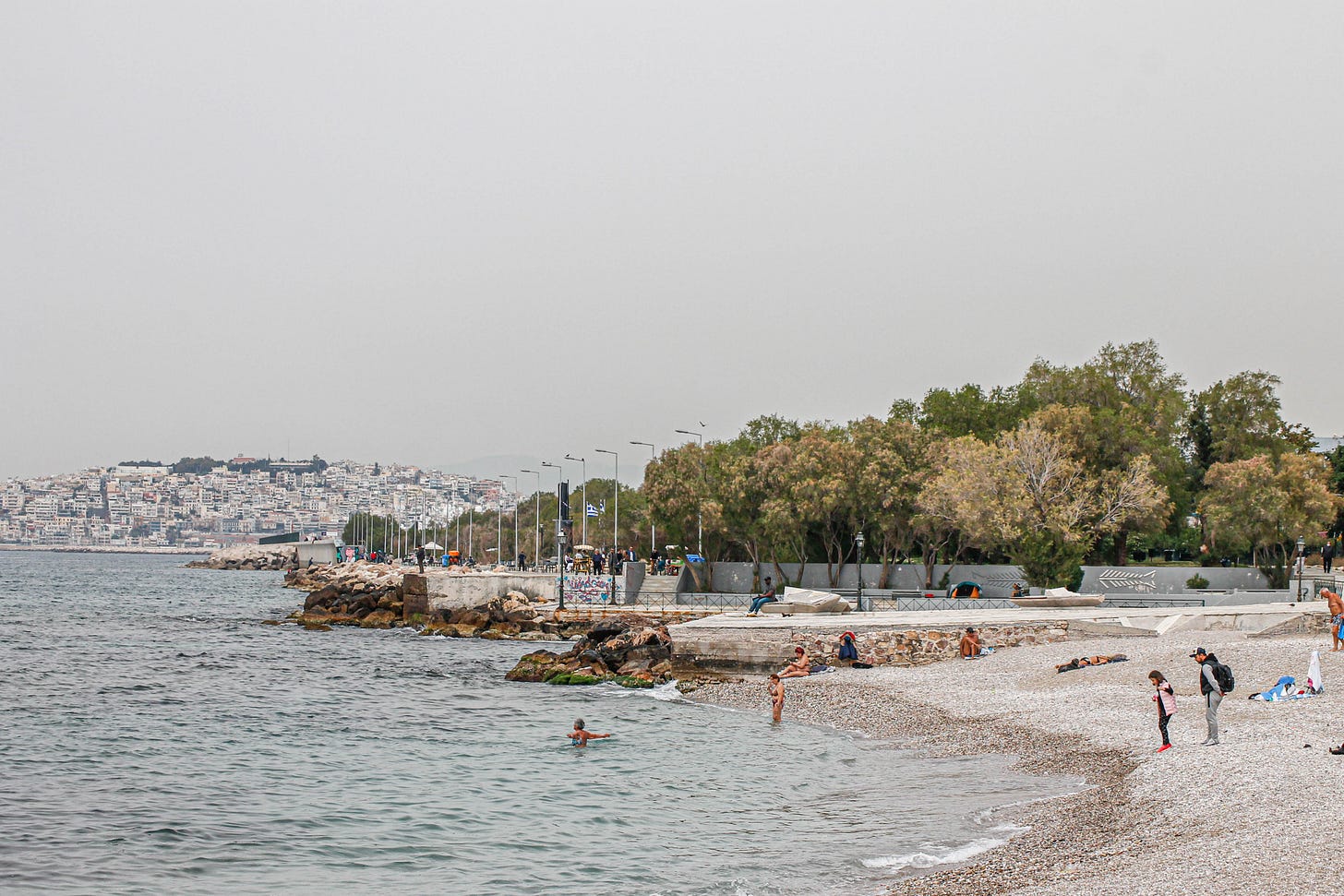

Was just there and had very much the same feeling about Athens-- it carries its historical importance very lightly, and feels very contemporary and cool at the same time. Love that photo of the crowd on the street with those brilliant flashes of red bags and shirts. We were only there a short time and I didn't get to discover the seaside area-- would love to see that next time. Great post!
Great report! We will be visiting Athens in a few weeks. Thanks for the tips!